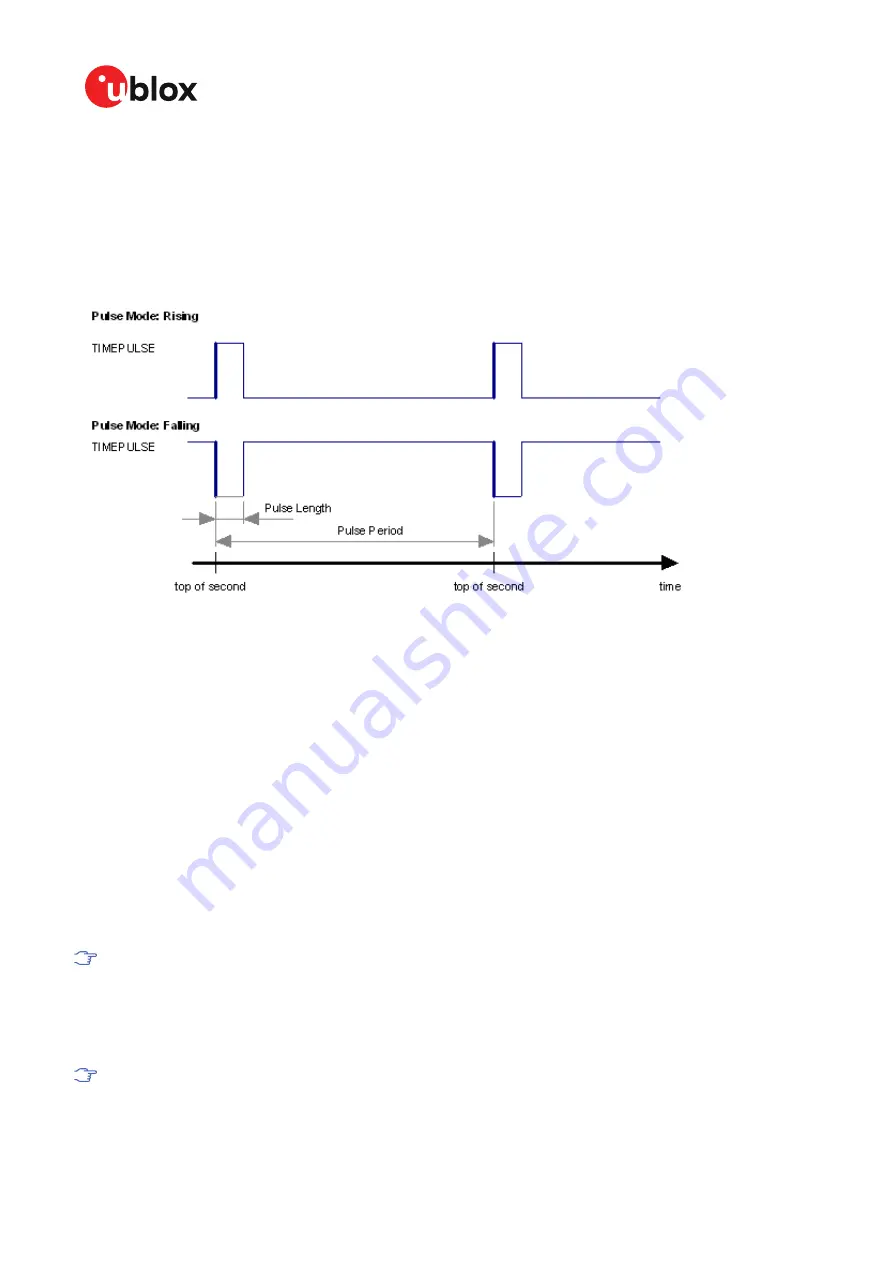
RCB-F9T - Integration manual
3.8 Timing functionality
The RCB-F9T provides precision time references used by remote or distributed wireless
communication, industrial, financial, and power distribution equipment.
3.8.1 Time pulse
3.8.1.1 Introduction
Figure 8: Time pulse
3.8.1.2 Recommendations
• The time pulse can be aligned to a wide variety of GNSS times or to variants of UTC derived
from them (see the chapter on
). However, it is strongly recommended that the
choice of time base is aligned with the available GNSS signals (so to produce GPS time or
UTC(USNO), ensure GPS signals are available, and for GLONASS time or UTC(SU) ensure
the presence GLONASS signals). This will involve coordinating the setting of CFG-SIGNAL-*
configuration group with the choice of time pulse time base.
• When using time pulse for precision timing applications it is recommended to calibrate the
antenna cable delay against a reference timing source.
• In order to get the best timing accuracy with the antenna, a fixed and
accurate
position is
needed.
• If relative time accuracy between multiple receivers is required, do not mix receivers of different
product families. If this is required, the receivers must be calibrated accordingly, by setting
cable delay and user delay.
• The recommended configuration when using the UBX-TIM-TP message is to set both the
measurement rate (CFG-RATE-MEAS) and the time pulse frequency (CFG-TP-*) to 1 Hz.
Since the rate of UBX-TIM-TP is bound to 1 Hz, more than one UBX-TIM-TP message can
appear between two pulses if the time pulse frequency is set lower than 1 Hz. In this case all
UBX-TIM-TP messages in between a time pulse T1 and T2 belong to T2 and the last UBX-
TIM-TP before T2 reports the most accurate quantization error. In general, if the time pulse
rate is not configured to 1 Hz, there will not be a single UBX-TIM-TP message for each time
pulse.
SBAS is not recommended to use for timing applications.
UBX-19003747 - R04
3 Receiver functionality
Page 30 of 54
Early production information













































